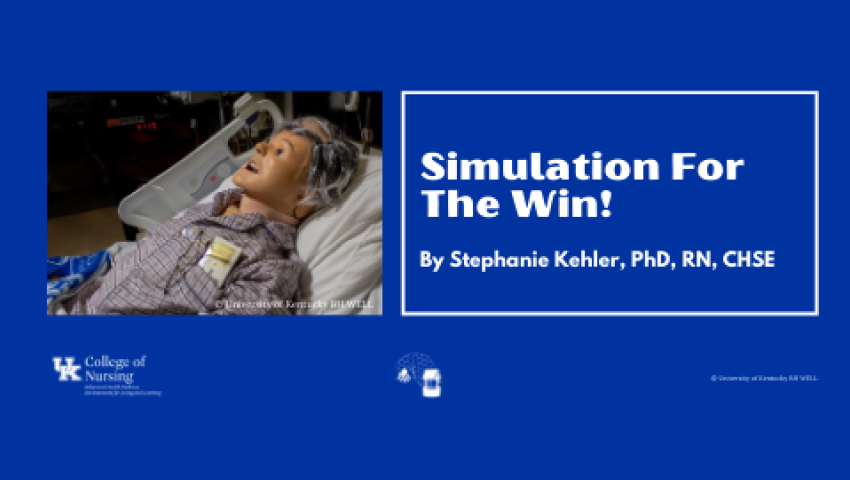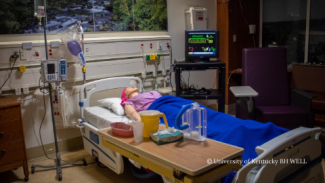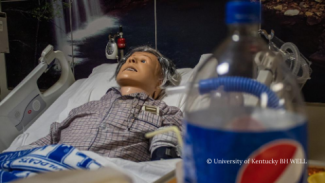Simulation is an ideal setting for the learner to start “thinking like a nurse”. Working in a simulated environment allows learners to make mistakes, reflect on their actions, and learn from them. We create simulations using Standards of Best Practice, which basically means we want simulations to have learning objectives and match learning needs. Simulations are designed so they can:
- Physically mimic a real environment. Notice our friends above are in hospital beds.
- Create a health issue that makes sense. In other words, if one of our simulation friends is having complications due to COPD, then we would expect to see an increased respiratory rate and hear crackles in the lungs.
- Include real-life distractions and noises. Seriously, what fun would it be without loud noises and distractions? For example, In addition to his illness, Otto is confused and calls out for help frequently. Then there is Anna’s mom who is in the room and is very upset. In other words, there is a lot going on, and these students get to practice.
Typically, simulation involves three components:
- Prebrief. Before the simulation, learners receive details and expectations along with necessary background information and orientation to the environment. Sometimes, roles are assigned and there is a tight timeframe. Because, let’s face it, sometimes care must be provided very quickly.
- Simulation Scenario. Learners care for the “patient” given their medical history. They use actual equipment with our “patient” realistically showing symptoms and responses based on the learner’s actions. No pressure! These “patients” were made for learning!
- Debriefing. Believe it or not, debriefing is the most important part of simulation learning. This is where the learner can process their emotions, actions, and “patient” outcomes. The learner gets to think about what influenced their actions and how they will handle a similar situation in the future. This is where self-belief in one’s own ability to succeed and make good decisions can grow.
Experience and reflection are the keys to learning. Simulation is a technique that is used to provide both the real-life experience through the actual simulation scenario and reflection through the debriefing process. Following the standards of best practice in the simulation will ensure the best learner outcomes as well as improve patient care.


